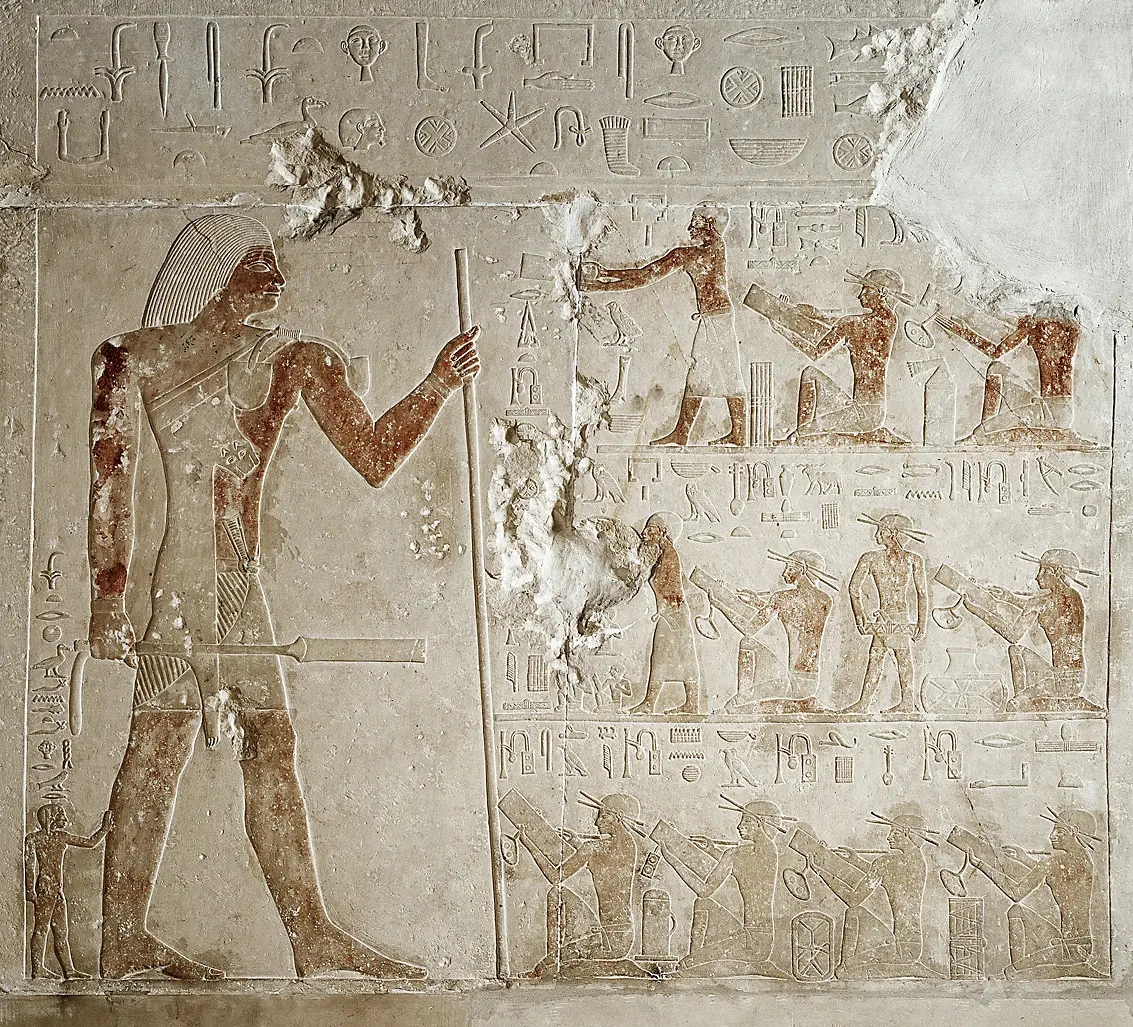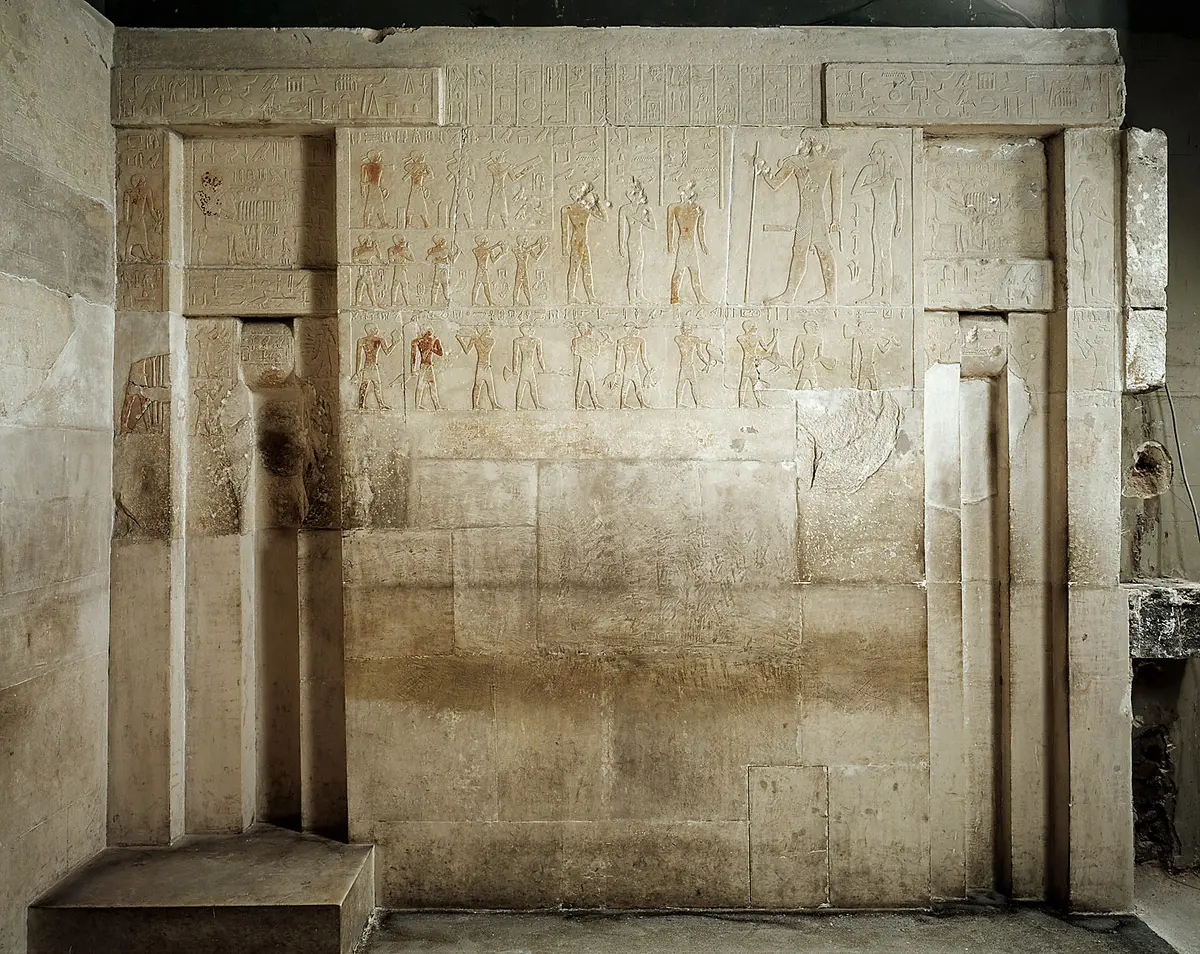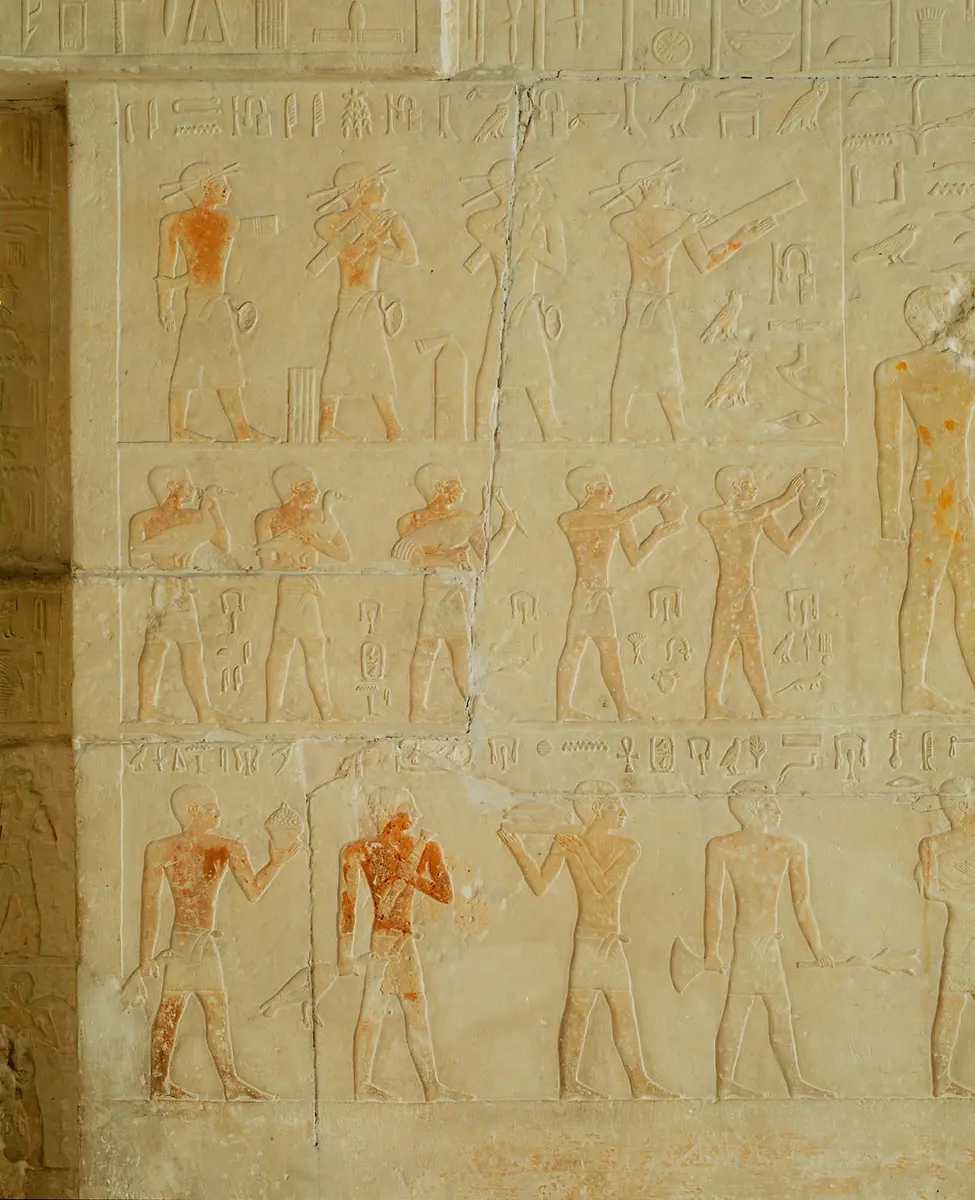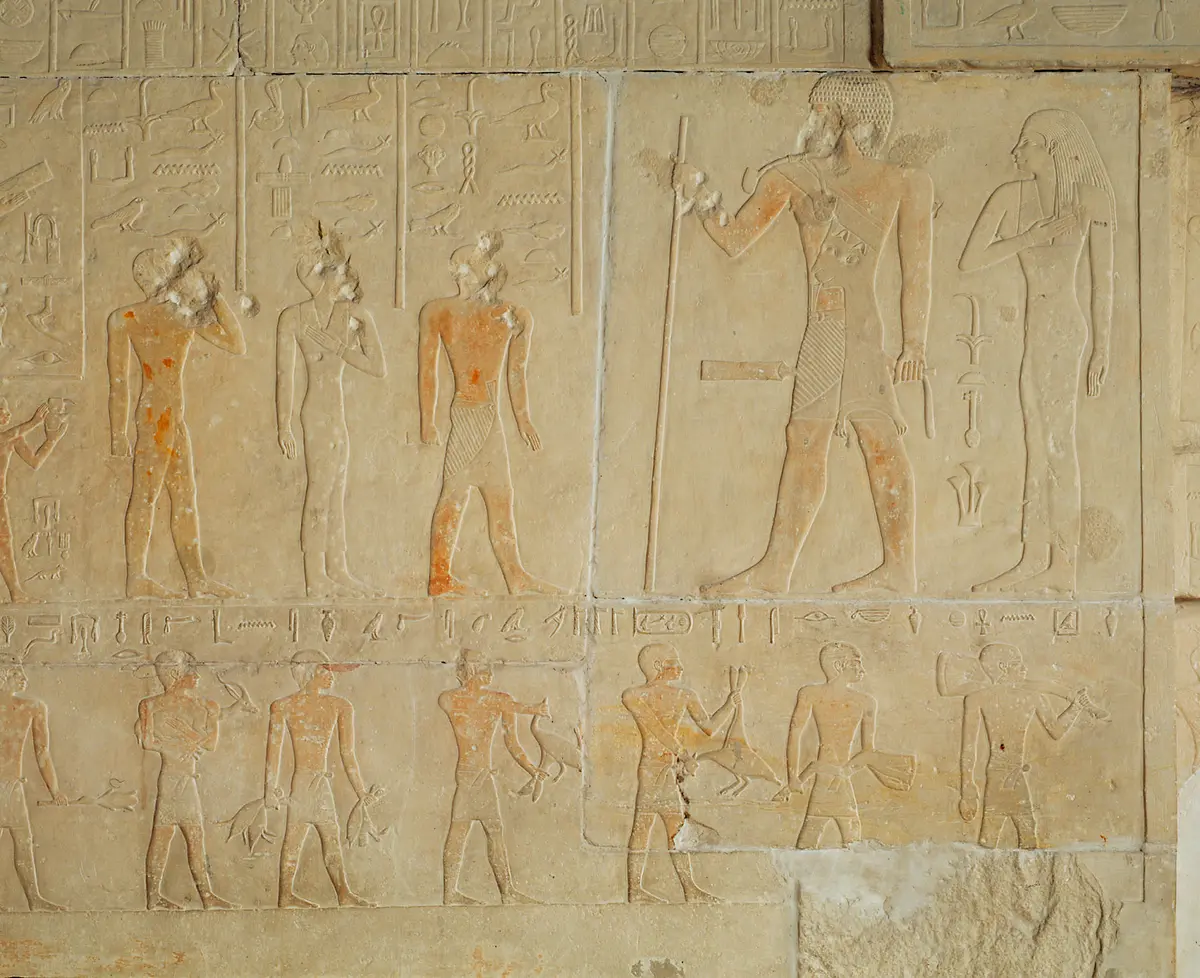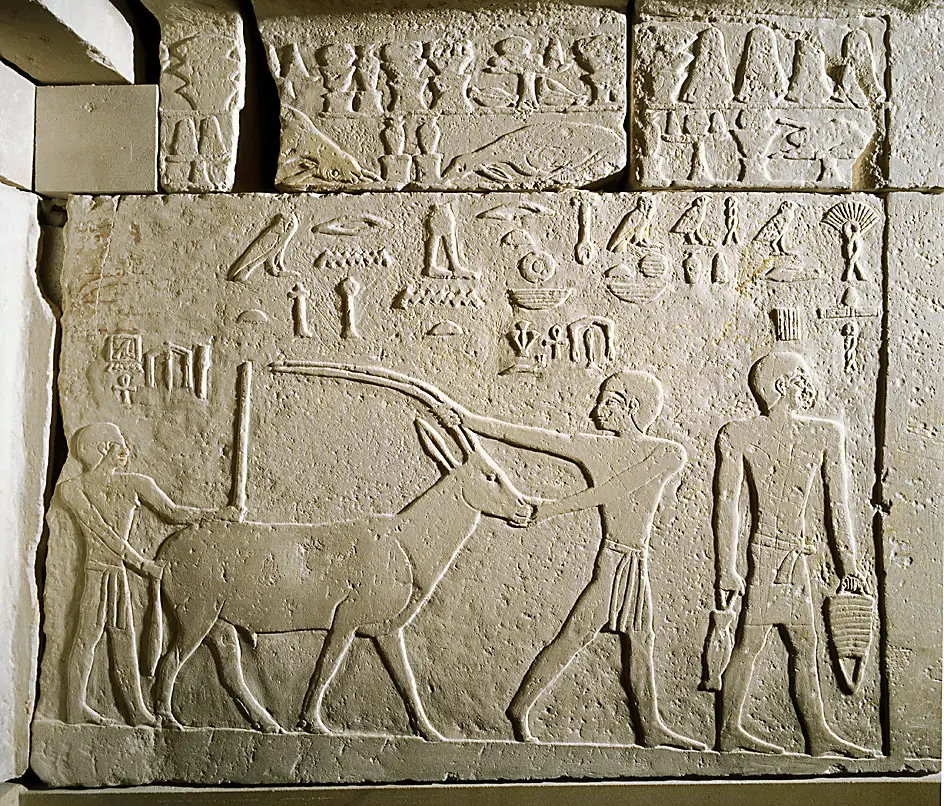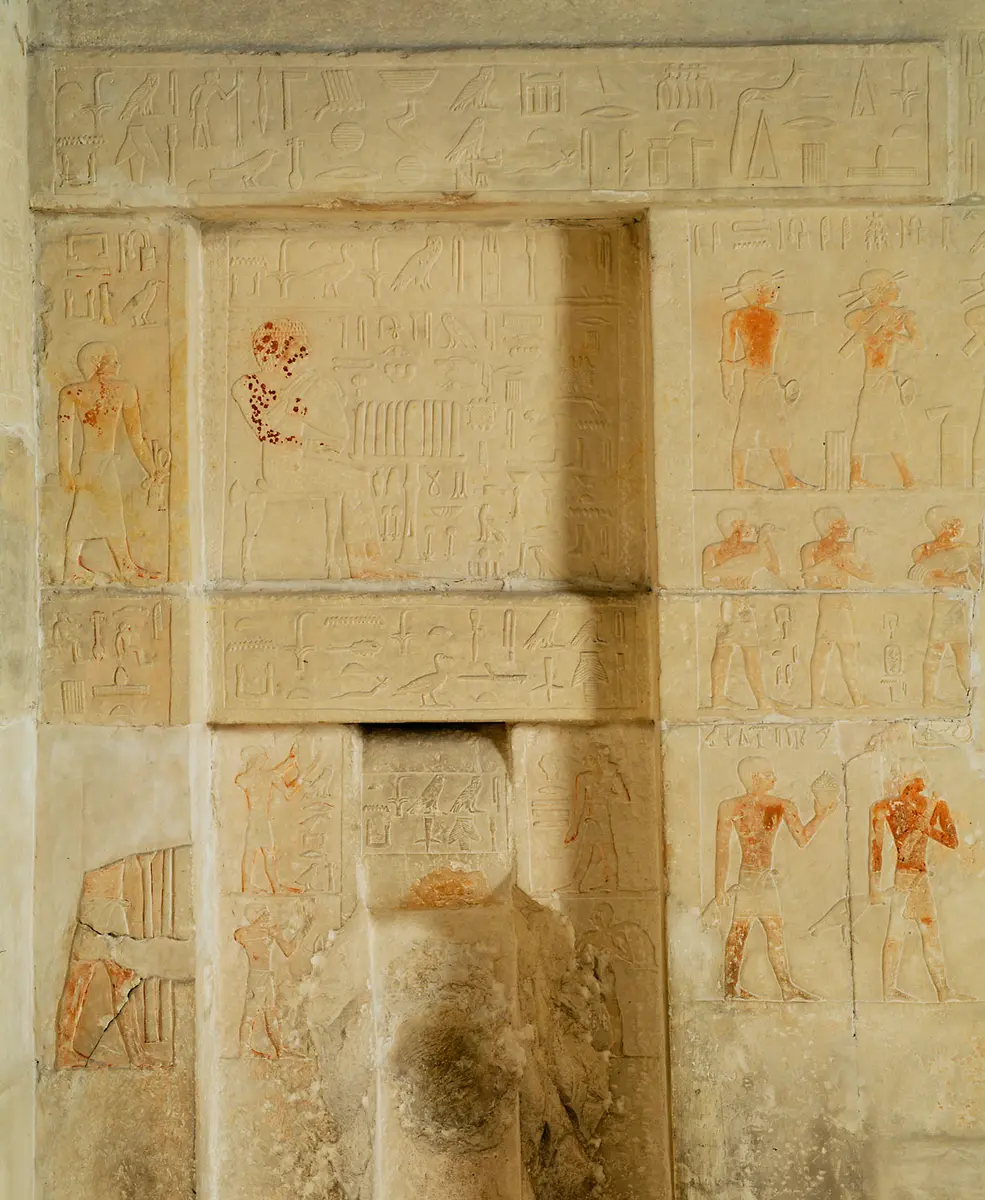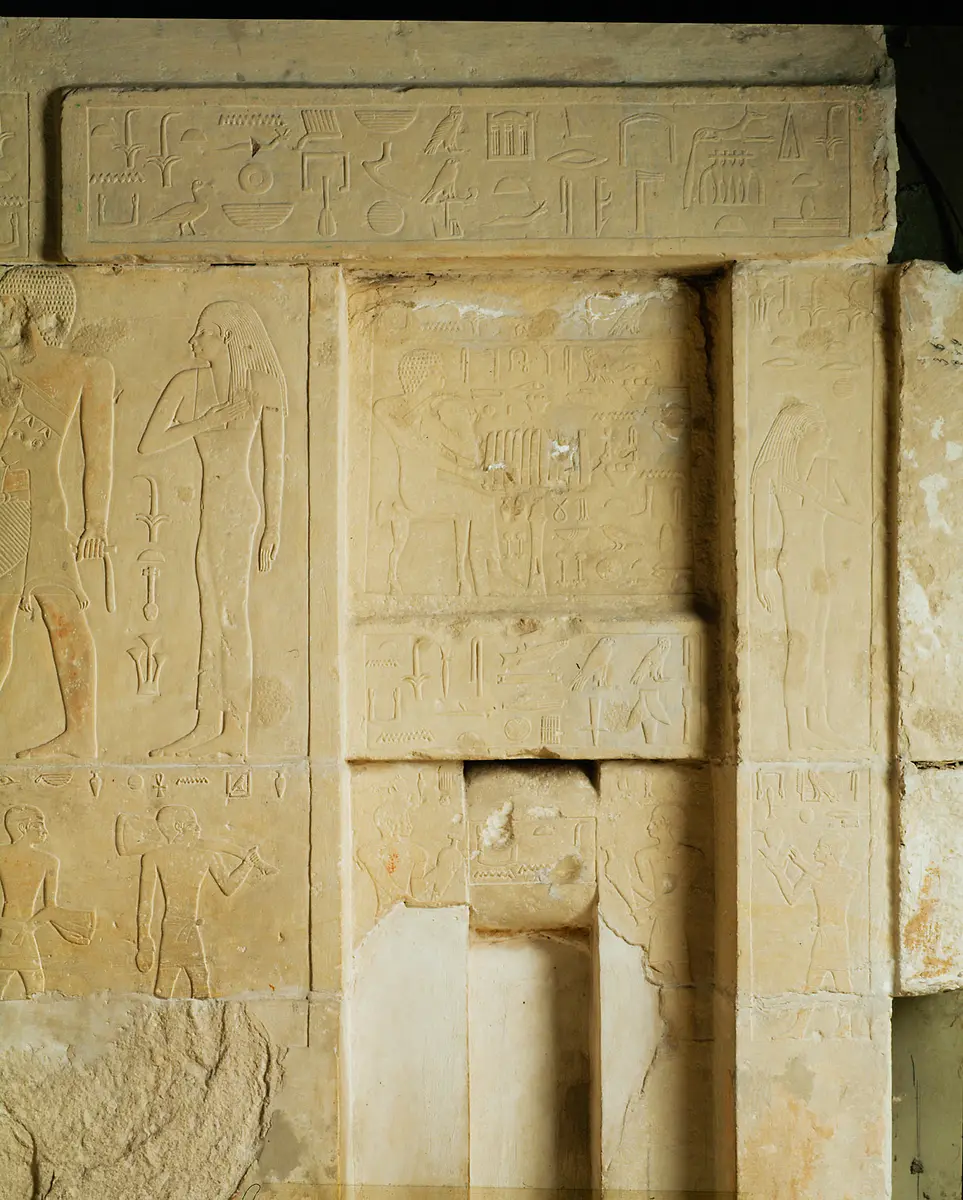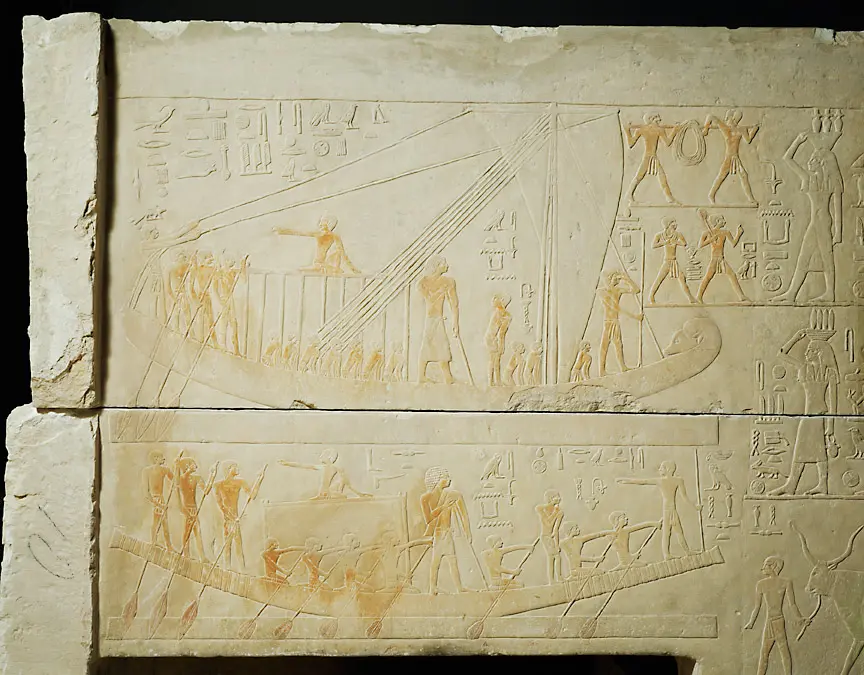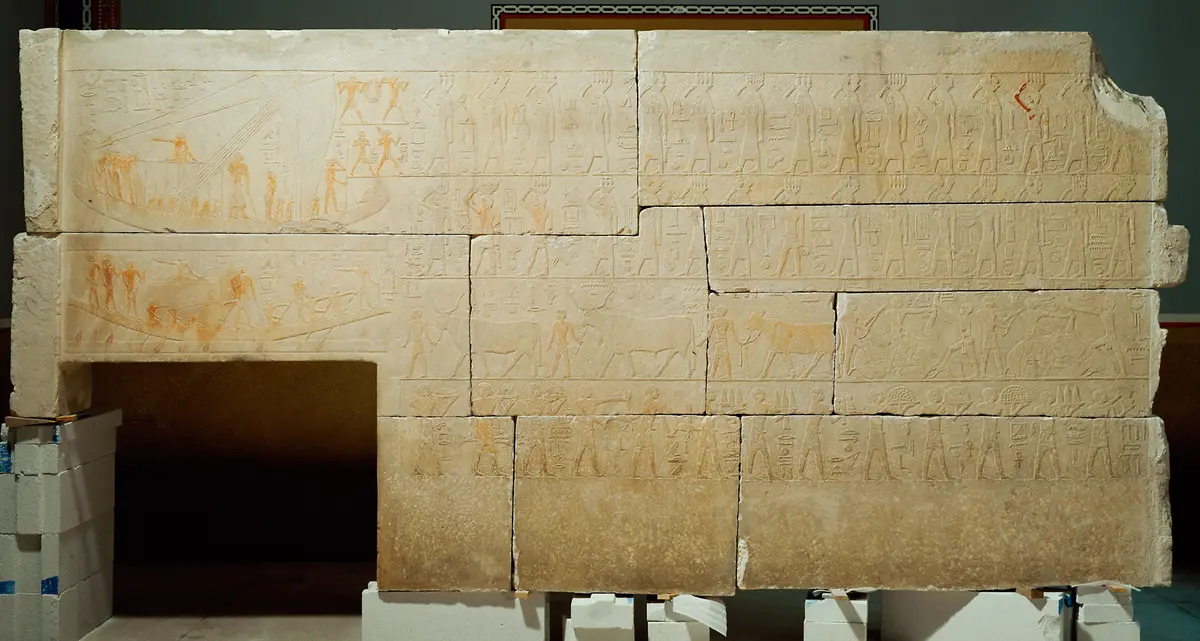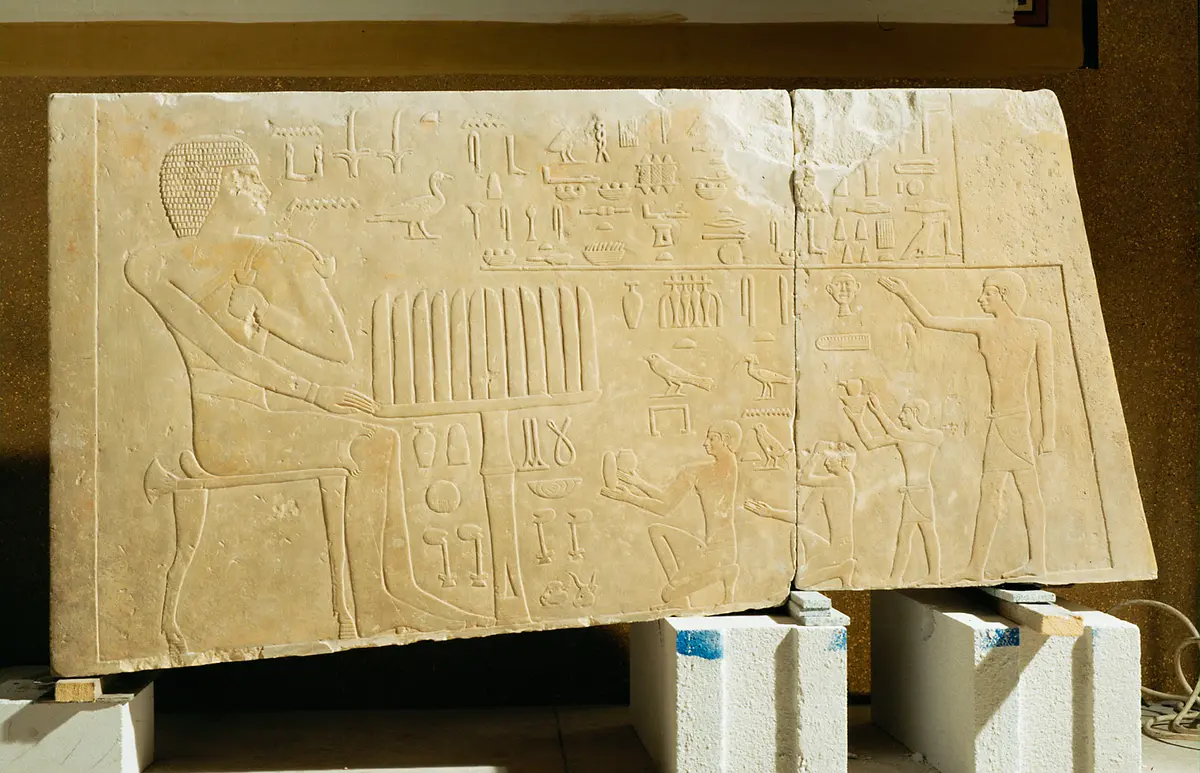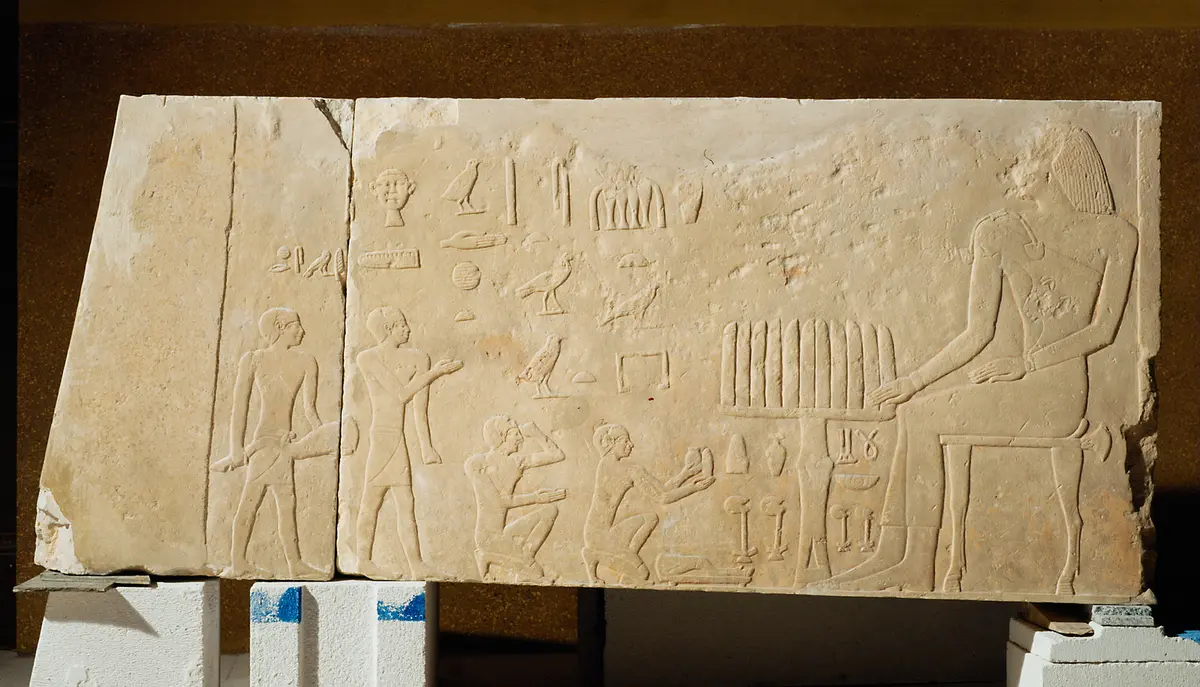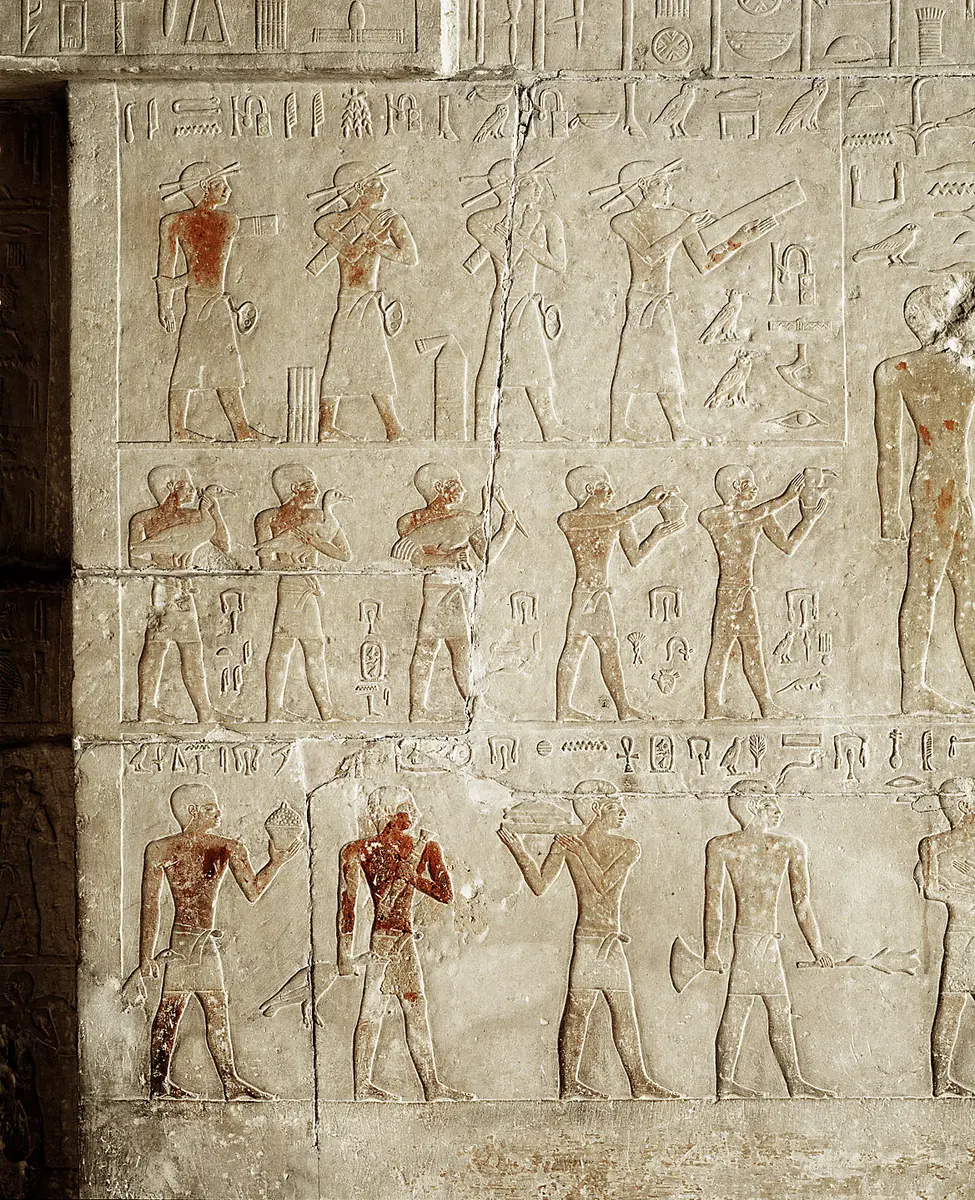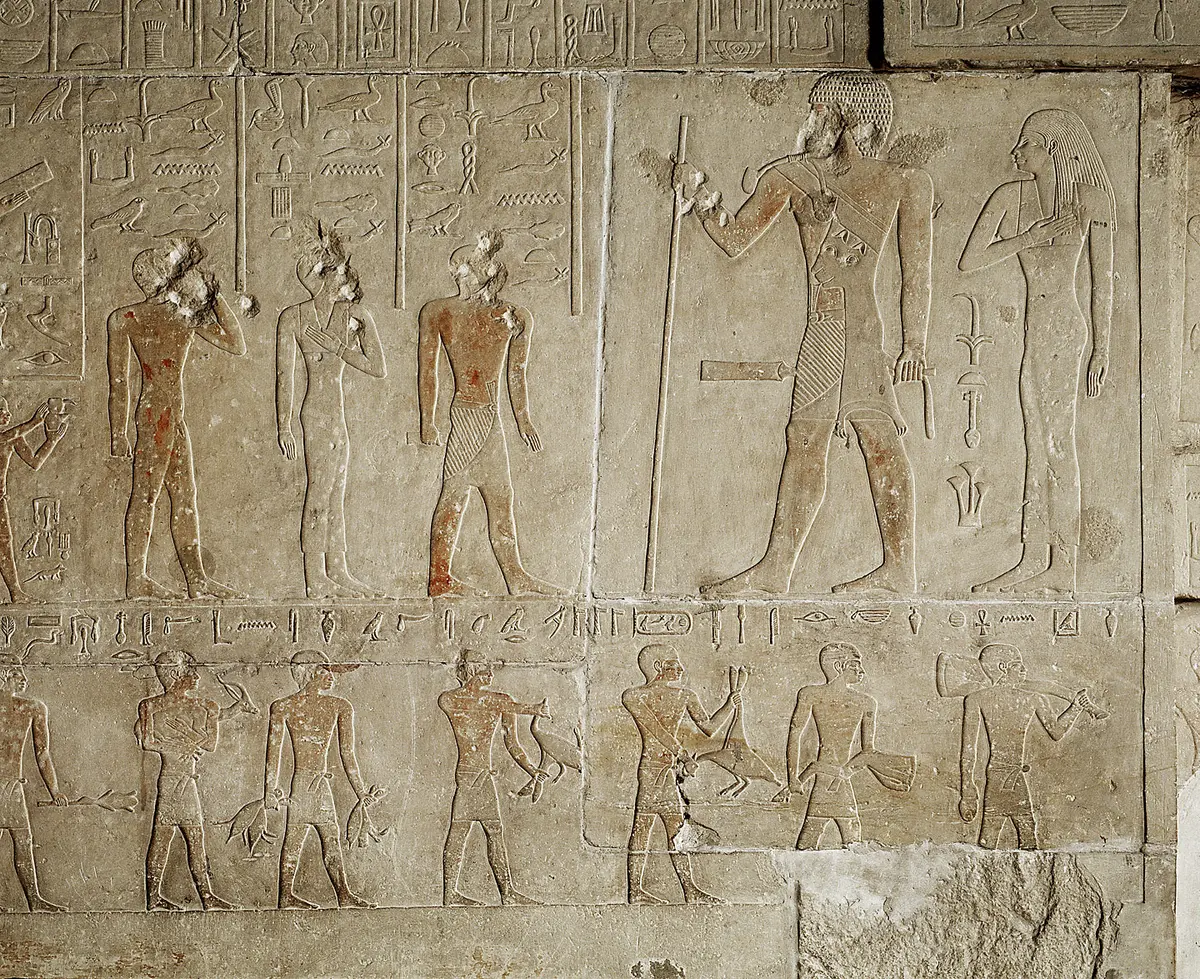Chapel of Ka-ni-nisut
Die Mastaba des Beamten Ka-ni-nisut wurde 1913 in Giza von einem österreichischen Grabungsteam entdeckt. Die Kultkammer dieses Grabes, die oberirdische Verehrungskapelle, wurde für das Kunsthistorische Museum angekauft.Die Kultkammer blieb auch nach der Grablegung des Toten zugänglich. Hier wurden für den Toten Gebete gesprochen, Opfer dargebracht und Rituale vollzogen. Szenen aus dem Totenopferritual, Gabenbringer und Schlachtung von Opfertieren sind an den Wänden angebracht. Die Nordwand der Kultkammer zeigt Ka-ni-nisut in sehr großem Maßstab gemeinsam mit seinem ältesten Sohn, der sehr klein wiedergegeben ist, vor den Schreibern seines Haushaltes.
Title:
Chapel of Ka-ni-nisut
Time:
early 5th Dynasty, ca. 2500 BC
Object Name:
cult chamber
Culture:
Ägyptisch
Material/technology:
Painted limestone
Dimensions:
L (Opferraum) 370 cm, B (Opferraum) 150 cm
Copyright:
Kunsthistorisches Museum Wien, Ägyptisch - Orientalische Sammlung
Invs.:
Ägyptische Sammlung, INV 8006
Provenance:
1913, excavated by the Academy of Sciences, Vienna
